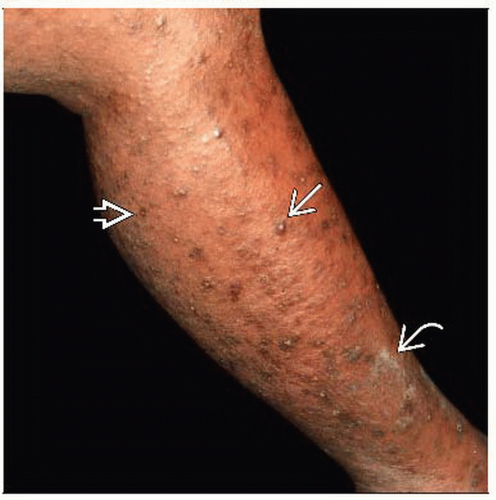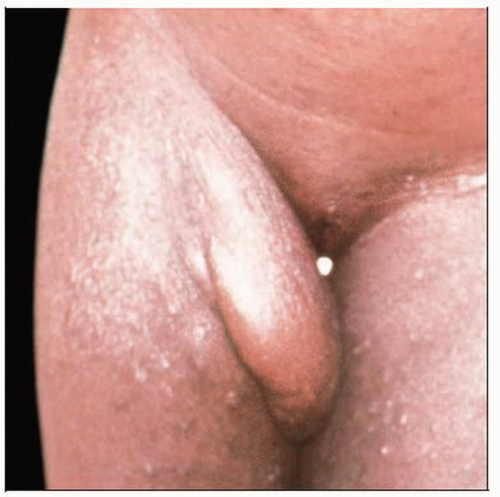Onchocerciasis
George R. Collins, DO
Joseph Susa, DO
Clay J. Cockerell, MD
Key Facts
Etiology/Pathogenesis
Caused by filarial nematode Onchocerca volvulus
Transmitted to humans via bite of black fly of genus Simulium found near free-flowing waterways
Clinical Issues
Early pruritus and urticaria of face and trunk
Papulovesicles, plaques, nodules, maculopapular rash
Small, closely packed or large, widely separated lesions occur anywhere and any time after infection
Microscopic Pathology
Lymphohistiocytic inflammation with eosinophils and histiocytes surrounding microfilariae in dermis
Microfilariae can occur in absence of inflammation and may be seen in lymphatic spaces
Microfilariae vary in length from 220-360 µm and have finely tapered tail
Onchocercoma: Bundle of adult worms encased by lymphohistiocytic inflammation and fibrosis
TERMINOLOGY
Synonyms
“River blindness”
Definitions
Chronic systemic filarial infection most commonly involving skin and eyes
ETIOLOGY/PATHOGENESIS
Infectious Agents
Caused by filarial nematode Onchocerca volvulus
Lifecycle
Transmitted to humans via bite of Simulium black fly, found near free-flowing waterways
Bite results in microfilariae entering skin and developing into adult worms in subdermal connective tissues








